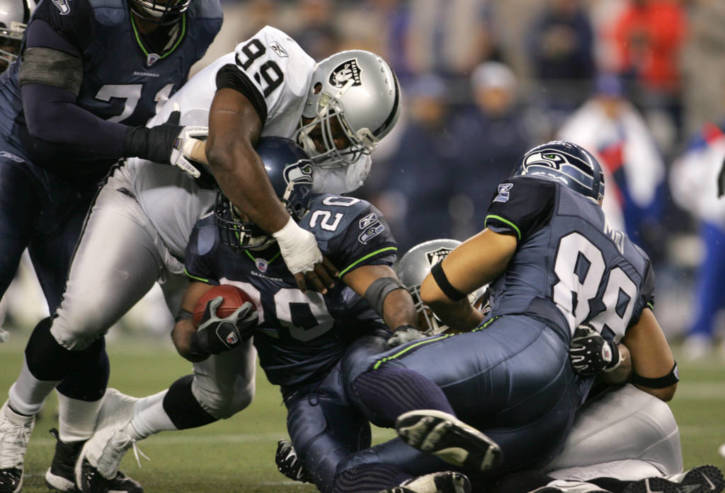
As an NFL cheerleader, on the field I firsthand witnessed injuries, including head injuries. Now as an emergency medicine physician I frequently treat patients in the emergency room that have potentially suffered a brain injury after trauma.
A concussion is a type of traumatic brain injury that can result after trauma, like a blow to the head, and can affect brain function. Symptoms can vary from mild headaches, nausea, vomiting, to confusion, memory problems, and many more. A single concussive episode likely does not cause permanent damage, however a second concussion, especially soon after the first, can cause permanently disabling or deadly effects.
It is estimated that there are about 300,000 sports-related concussions every year and an athlete in contact sports may have the likelihood of suffering a concussion at about 10% per season.
Some athletes suffer from long-term sequalae of concussions, like in post-concussive syndrome or may even develop progressive degenerative disease as in chronic traumatic encephalopathy, that has features similar to Parkinson's and Alzheimer's disease.
There has been increased awareness in this area as many NFL players who suffered brain injury after concussion have been part of a lawsuit against the NFL to help them recover for their brain injuries resulting from football-related trauma. Over 11,000 former NFL players who have suffered long-term brain injury have pre-registered for benefits under this lawsuit. Recently, former NFL player Warren Sapp announced that he is already suffering from memory loss, likely from concussion-related injuries during his NFL career, and has pledged to donate his brain to concussion research.
The NFL has since developed very strict guidelines, a “concussion protocol” to help prevent these types of injuries, identify and treat affected players early and to prevent worsening of their injuries. Despite these efforts, there has been little change in the injuries. Statistics on NFL-related concussions have been publicly available for the past five years, but it has only been the latest year’s results that have showed a noticeable decline in concussions.
The medical experts working with the NFL recognize that more work still needs to be done. The number of concussions in preseason games has declined the most, however, numbers in regular season games have only declined slightly, perhaps reflecting underreporting of the injuries or not identifying the injuries at the time of injury during the regular season games.
NFL teams can be fined for violating the concussion protocol, and they have also hired independent medical staff to watch the games to look out for concussive-related injuries. Overall, compliance has been difficult.
The protocol does have practices for monitoring all players throughout the season and intervention when necessary, but its screening tools still has flaws. It is still difficult to identify injuries when they happen. The player may not want to voluntarily let the team know they have been injured or are having symptoms, they may want to keep playing, not understanding the extent of their injuries, and may also feel pressured to continue to play.
Because of the type of injury, this is a difficult area to diagnose, regulate and enforce. A lot more research needs to be done, along with improved education and support for the players. Improved public awareness of this issue will help to improve and encourage research in this area. The NFL seems to be headed in the right direction to fix this problem, but much more needs to be done.
 Dr. Regina Bailey is an emergency medicine physician, lawyer, best-selling author, speaker, entrepreneur, radio and TV personality, and a former NFL cheerleader. She has published books and articles in the health law, biotechnology and medicine fields. She has appeared on TLC, Discovery Life Channel, CNN, E! Channel and has been published in the New York Times, US News, Medscape, BlackDoctor.org, Huffington Post and Ebony Magazine. Visit her website www.drreginamdjd.com and follow her on Facebook, Twitter and Instagram.
Dr. Regina Bailey is an emergency medicine physician, lawyer, best-selling author, speaker, entrepreneur, radio and TV personality, and a former NFL cheerleader. She has published books and articles in the health law, biotechnology and medicine fields. She has appeared on TLC, Discovery Life Channel, CNN, E! Channel and has been published in the New York Times, US News, Medscape, BlackDoctor.org, Huffington Post and Ebony Magazine. Visit her website www.drreginamdjd.com and follow her on Facebook, Twitter and Instagram.









